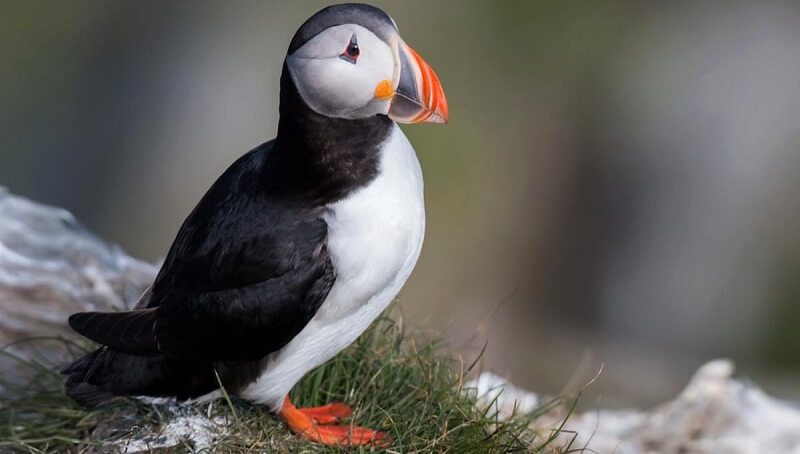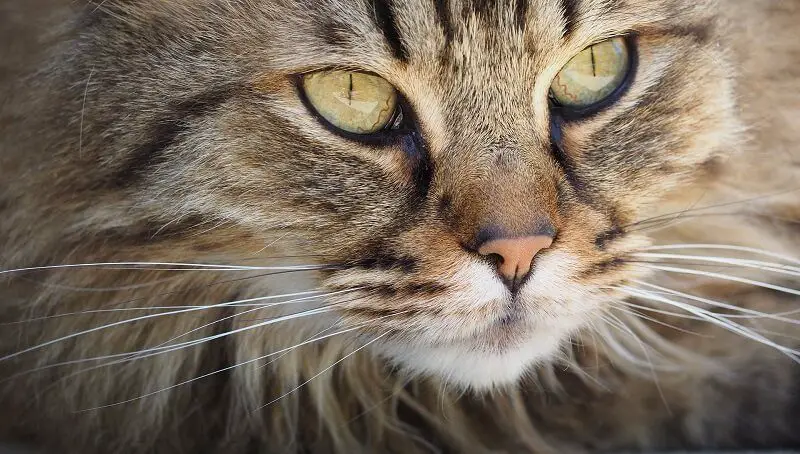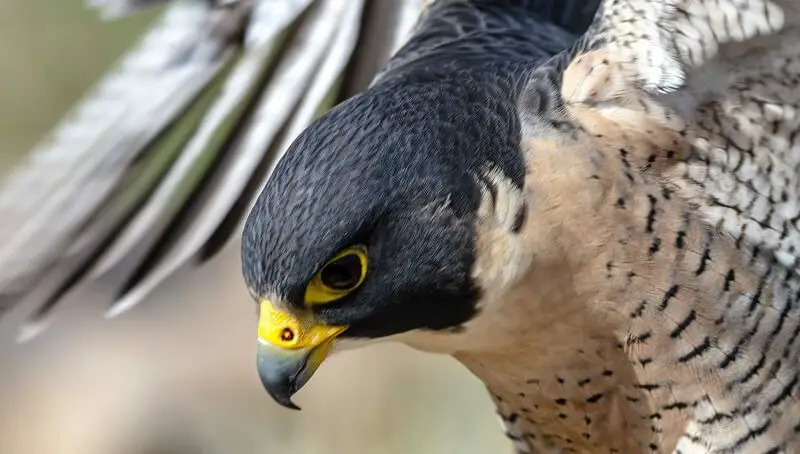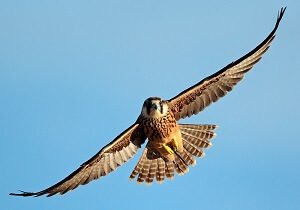
Puffin Bird – The Sea Parrot
January 17, 2023
Why Do Cats Have Whiskers?
January 18, 2023
In addition to the attractive color plumage of some species and their distinctive silhouette, these birds have top-notch characteristics of a winged predator. It is, after all, the group from which comes the fastest creature in the world, the peregrine falcon.
General characteristics
- Length: 25-30 cm
- Wingspan: 55-65 cm
- Body weight: Male 160-180 g, female 190-220 g
- Maturity: Male at 2 years, female at 1 year
- The period of mating: May-June
- Number of eggs: 2 to 7, average 4 to 5
- Duration of the hatching: 28-32 days
- Age of leaving the nest: one month
- Behavior: Solitary
- Food: Birds and small mammals, insects
- Life span: The oldest known age was 11 years
Origin and a short history
Falcons, members of the Falco genus in the Falconidae family, are small and medium-sized raptor birds that form a very homogeneous group. They specialize in active hunting, so all species have the same evolutionary adaptations: Lean bodies, agile flight, strong claws, and sharp curved beaks. All species have a dark spot under their eyes, called a “mustache”. Most species exhibit reproductory dimorphism, and usually, females are larger than males.
The species of falcons are widespread on all continents. Within the group, we find both migratory species like the Amur falcon, Eurasian hobby falcon, and Merlin falcon, and sedentary species Peregrine falcon, and Common kestrel falcon.
The homeland of the falcon was middle and northern Asia, with its unbroken steppes, characterized by a great wealth of hunting. Through the Huns, Mongols, and Arabs, as well as the Crusades, the falconry entered Europe and experienced amazing development.
In the Romanian Principalities, this hunting occupation came relatively late and was maintained until the middle of the 19th century. For a more faithful integration in history, by falconry, I mean only hunting with the proper variety of falcons, different species of the genus Falco and Hierofalcon.
But along the way, other species of prey birds were used in the falconry, such as the Accipiter and other birds, not only the falcons. In addition to the birds of prey trained or maintained for princes and dignitaries, the citizens could also use them for hunting.
Falcon’s diet and how does it hunt
You might also like my articles about:
They are carnivorous species, the food being very varied from small mammals, reptiles, amphibians, small birds, insects, etc. All species are actively hunting, using two different strategies: either flying at a fixed-point following prey from a high altitude or pursuing it and launching the attack at high speed. This is possible due to excellent binocular vision. A characteristic of falcons is the presence of a sharp “tooth” on the sides of the beak, which they use to tear the prey.
About 80 percent of the falcon’s food is represented by small birds. They hunt many species of singing birds, as well as aquatic creatures. These birds also consume field mice, lemmings, bats, dragonflies, cockroaches, and butterflies.
The falcon usually hunts alone, and sometimes with its pair. The birds sit at a low height in a place of observation, and if they notice a possible prey, they chase it. If they fail to catch it on the first attempt, they chase it at a small height, then fly above it, and finally catch it.
Many species consume corpses when the opportunity arises, as few of them won’t miss the opportunity of a rich meal without too much work.
However, most raptor birds usually hunt live prey and kill them with the weapons that are provided by mother nature, with their beaks and claws.
Features and behavior
 Over time, falconry has been seen as an activity related to kings, leaders, and high-ranking people. It is the highest activity among the different types of hunting because it is the most difficult.
Over time, falconry has been seen as an activity related to kings, leaders, and high-ranking people. It is the highest activity among the different types of hunting because it is the most difficult.
The falconry teaches humility, calms your spirit, and shares your sense of unification with nature and also with the falcon.
The falcon is a solitary animal, not so sociable. It does not have the instinct to obey a tamer, to follow the norms of a society. It cannot be punished, just as it cannot be commanded to obey; but it can be asked a command and rewarded.
Kings and high-ranking persons treat other persons equally, and even under these conditions, they kneel before a falcon. For the average person to obey everyone else, is a lesson of humility. His men, his horses, and his servants will obey his commands, but for a falcon, that king is no more than a mere fellow hunter.
Nesting
Some species nest in trees, often occupying the nests of other birds, especially corvids. Other species use abandoned quarries, rocks, and rocky cliffs for nesting. On the same principle, they lay their eggs in niches and cracks of buildings in cities and villages. Rarely, do they nest on the ground. They can nest alone, and certain species nest in small colonies, up to a few dozen pairs, where reproductive success is greater.
Reproduction and life cycle of the falcon
When the falcon arrives at the mating places, the males show a nuptial flight. They fly slowly winging to attract females. If a female enters the territory of a male, the birds fly side by side and then throw into the void and chase. The couple’s relationship lasts a mating season.
The female lays four to five eggs every two days, and they are hatched by both parents for a month.
Initially, the offspring are protected by the female, during which time the male hunts. The male brings food to the nest three to six times a day.
After 18 days, when the chicks have fully developed plumage, the female also goes hunting. After a month, the offspring can already leave the nest to pick up food from their parents but stay near them for another month, and then they become independent.
Migration
Most of the falcon’s diet is represented by insects, so some species will migrate, spending the winter in Africa. Other species, which feed on small birds, also migrate once the abundance of prey decreases as the “prey” migrates too. Resident species, such as the Common kestrel or Peregrine falcon, may be partially migratory, with the cold season moving according to food sources, generally to the south.
How we can help them
By supporting the moderate use of pesticides, we give both birds and nature a chance. Excessive use of chemicals reduces the food supply of many living creatures, including birds that feed on insects and small mammals. And over time they lead to contamination and reduction of soil fertility.
Also, falcons are top predators, at the top of the trophic pyramid, accumulating large amounts of chemicals from the prey consumed, which can lead to population collapse. The case of the use of DDT, which led, among other things, to the massive decline of the Peregrine falcon in 1970-80, is well known among falcon lovers. The species has gradually recovered in recent years after the ban on the use of DDT.
Not limiting the aggressive cutting and grooming of trees in which the corvids have nests, also used by falcons, leads to a decrease in their number and consequently to a decrease in the reproductive success of the species. A collaboration between landscapers, biologists, and local authorities would be welcomed, especially in urban areas, where the issue of crows requires more drastic measures, with effects not only on the species of corvids.
By signaling poaching cases to the authorities, we help falcon species, especially the Peregrine falcon. Eggs and even the birds are collected by the falconers, the species being one with old history in falconry. The nests, also with a tip, are destroyed in certain situations by pigeon breeders, who consider the peregrine falcon a threat to them.
